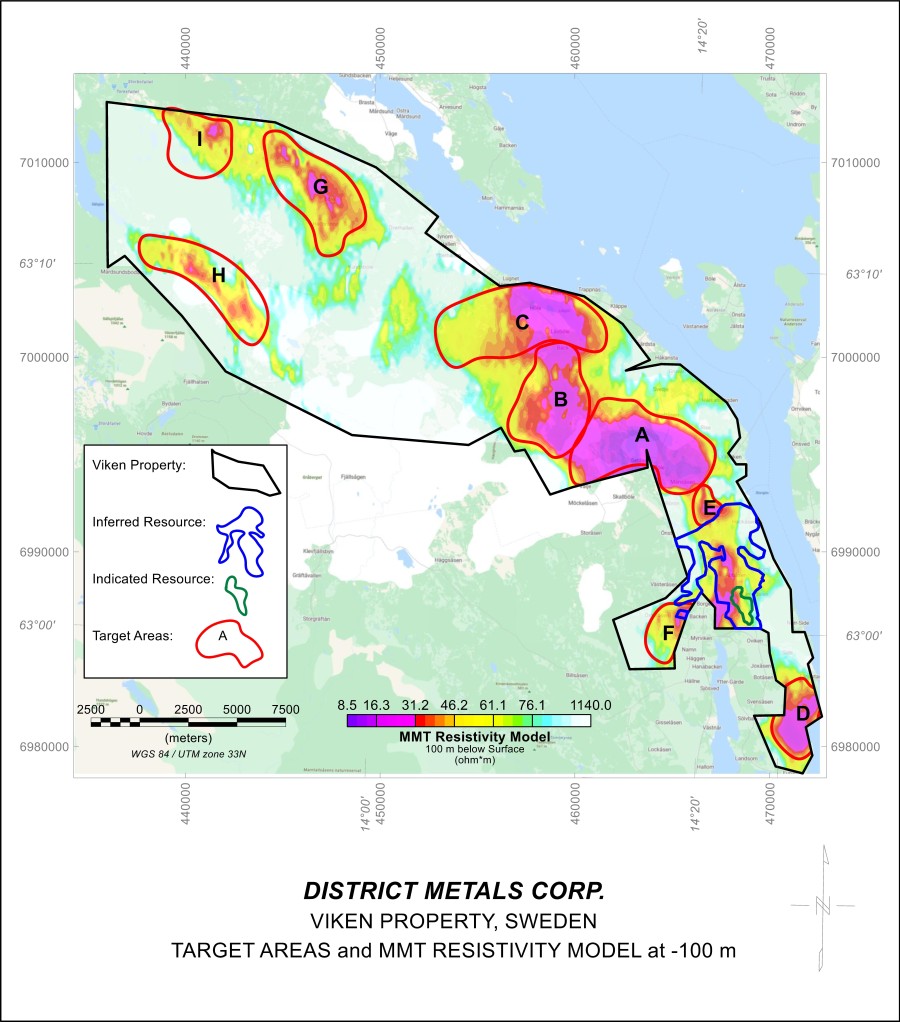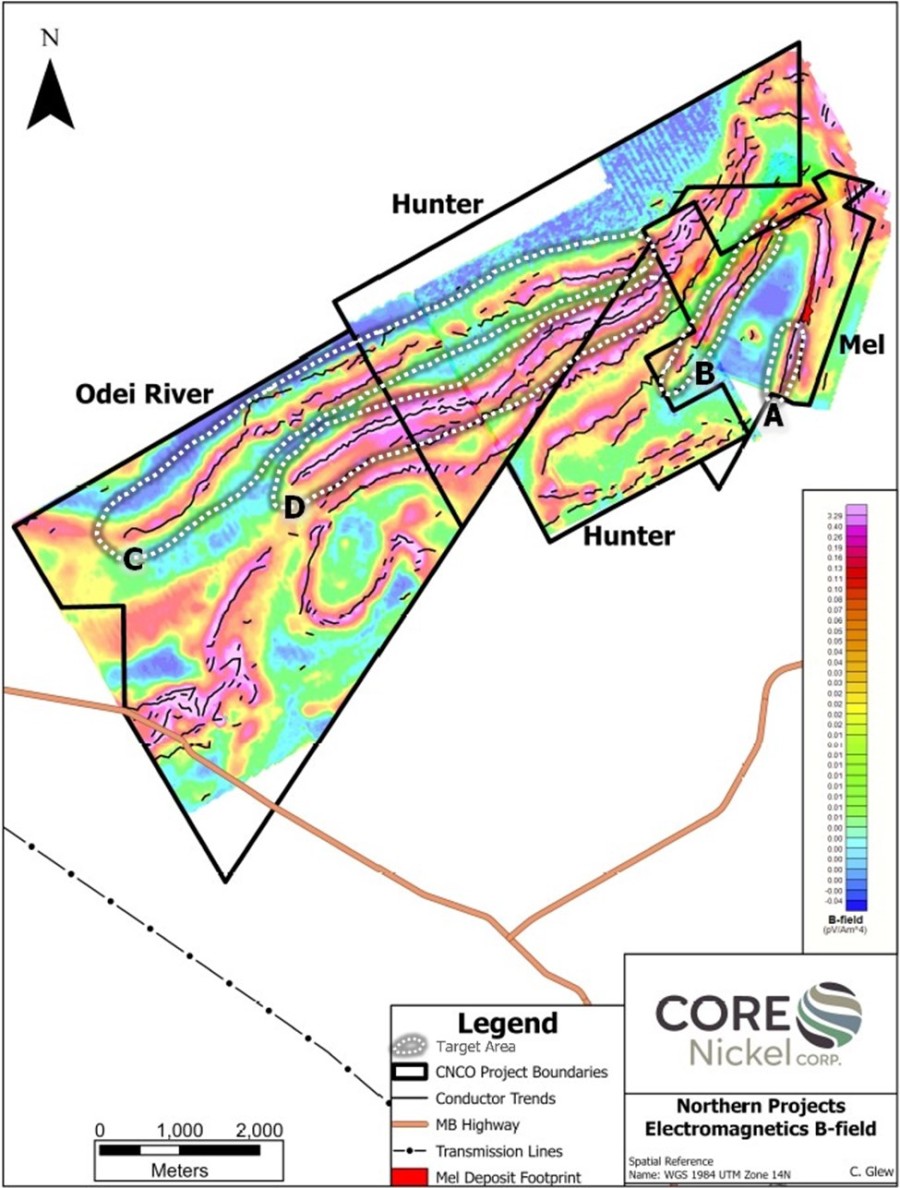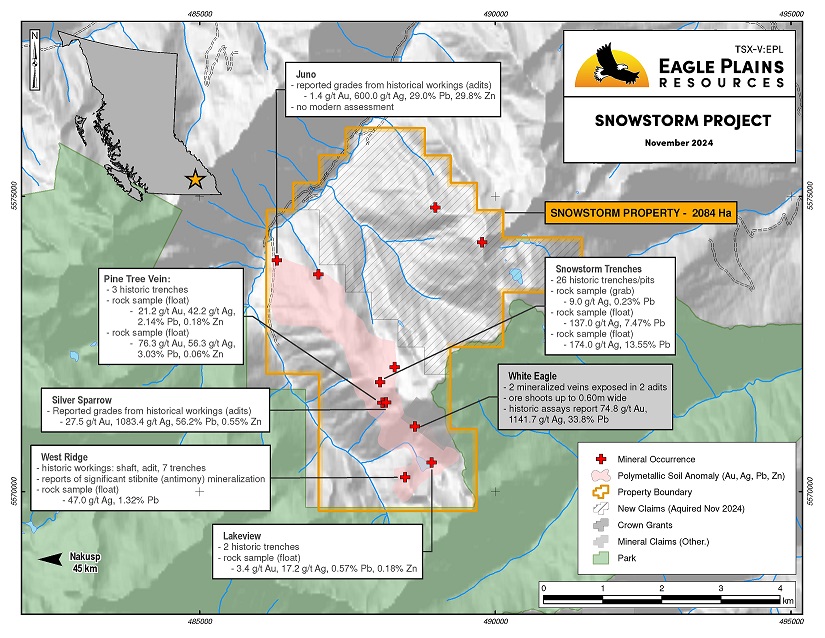SASKATOON, SASKATCHEWAN--(Marketwired - December 13, 2016) - GFG Resources Inc. (TSX VENTURE: GFG) (OTCQB: GFGSF)("GFG" or the "Company") announces that it has completed its Phase I and II exploration programs at its 100% owned Rattlesnake Hills Gold Project in central Wyoming, United States. In 2016, the Company planned a two-phase exploration approach that included a regional soil geochemical survey, ground-based and airborne geophysical programs over the entire property, geologic and alteration mapping and a 12-hole, 3,500 metre drill program focused on three advanced target areas: North Stock, Antelope Basin and Blackjack.
Brian Skanderbeg, President and CEO commented, "We have been able to accomplish a lot in 2016 and I am very pleased with our progress at Rattlesnake. The completion of our 2016 exploration programs, and the results to date, set the stage for GFG to take advantage of our newly consolidated land package. We have a better understanding of the district and have identified over 30 targets that remain to be tested. We look forward to the results of our 2016 drill program and to testing new regional targets in 2017. Our technical team has extensive expertise in alkaline gold systems and will take an integrated, district approach to demonstrate the potential at Rattlesnake."
2016 Exploration Programs
Phase I
The Phase I program consisted of historical data analysis, regional soil sampling, an airborne VTEM geophysical survey, detailed geologic and alteration mapping and an expansion of the existing gravity survey.
Nearly 2,500 soil samples were completed in prioritized areas that extended and expanded the historic soil surveys on the property. The Phase I soil grids were designed to infill areas between existing soils grids and to expand the sampling around the main zones of known mineralization near North Stock, Antelope Basin and Blackjack. To date, the Company has received assays from approximately half of the samples and the results indicate several new target areas that have coincident anomalies in arsenic and low level gold. Anomalous arsenic in soil samples is a key indicator of gold mineralization in the Rattlesnake Hills.
The Company completed an airborne VTEM and magnetic survey that was flown on 100 metre spaced lines oriented perpendicular to the historic radiometric and magnetic survey completed by Agnico Eagle Mines Ltd. in 2011. The results of this new survey (See Figure 1) have outlined structures and structural intersections that play a key role in controlling gold mineralization at North Stock and Blackjack and their possible extensions. Furthermore, a group of targets on the northern section of the property, 3 to 5 kilometres north of North Stock, show similar northeast and northwest-structural controls and have associated alkaline magmatism. The interpretation of the VTEM data will play a key role in understanding the structural framework of the district and prioritizing 2017 drill targets.
To gain a better understanding of the structural geology of the Rattlesnake Hills district, geologic and alteration mapping has been completed. These results, along with Infrared Spectrometer readings of samples collected in the field as well as on drill core, are still being evaluated and will be interpreted in the coming months. Historic structural modelling of the Rattlesnake Hills district is limited and presents an opportunity to better outline and target potential zones of mineralization. Understanding the structural model is important because it will help recognize extensions of mineralization and will be used to develop, prioritize and test anomalies that are generated by the regional geochemical program.
The Company has also supplemented the existing ground gravity data with nearly 500 additional data points. As demonstrated in Figure 2, results have been modeled and outline deep seated structures in the district that may control the emplacement of the alkaline intrusive rocks. Specifically, the gravity low and gravity gradient trend associated with North stock, extends more than 2 kilometres to the northeast and is associated with mapped zones of adularia alteration and brecciation. The signature also extends to the northwest of North Stock where a strong gravity low and gradient are associated with the Goat Mountain alkaline centre and anomalous gold-arsenic soil geochemistry. The gravity data has allowed the Company to better understand the ore controls around the intrusive centres and, when integrated with other data sets, will drive drill targeting for the 2017 program.
Phase II
During the fourth quarter, the Company initiated its Phase II program which included additional soil sampling and a drill program focused on direct extensions and proximal analogies at the North Stock and Antelope Basin deposits and the Blackjack target.
Soil sampling in the fourth quarter consisted of an additional 2,500 samples collected (approximately 5,000 samples in 2016). These samples were collected over newly-staked ground as well as the recently-acquired IEV ground (See press release dated October 12, 2016) and will allow a first-pass regional evaluation of the claim block. Assay results from this program are pending.
The Company also completed a 12-hole, 3,500 metre drill program that focused on the direct extensions and proximal analogies at the North Stock and Antelope Basin deposits and the Blackjack target. The bulk of the program, 9 holes (2 core and 7 RC), was at the North Stock and Antelope Basin areas and the remaining 3 holes (1 core and 2 RC) were in the Blackjack area. In addition to the 2016 drill program, there remain several high priority extensions at North Stock, Antelope Basin and Blackjack that have been permitted and are expected to be tested in 2017. Logging and cutting of the core is currently in progress and the RC samples have been sent to the lab. Core samples will be shipped to the lab as soon as the logging and cutting has been completed. The results from this program are expected to be received in the first quarter of 2017.
The drill programs at North Stock and Antelope Basin were designed to test extensions of known mineralization along trends that remain open in multiple directions. A total of 3 holes in this area were designed to test the area between North Stock and Antelope Basin where historic drilling showed mineralization hosted in Precambrian schist. A total of 4 holes tested the northwest extension of North Stock and 2 holes tested the southern strike continuity of mineralization at Antelope Basin. The drill program at Blackjack was designed to follow up on historic shallow drilling that discovered mineralization, to test for mineralization in the large-scale, east-west trending, range front fault and to test the strong soil geochemistry anomaly that extended to the northwest and northeast. A plan view map of the 2016 drill hole locations and historical drill highlights at North Stock and Antelope Basin is presented in figure 3 and the 2016 drill hole locations, historic drill highlights and gold in soil geochemistry for the Blackjack area is presented in figure 4.
Outlook
Over the next several months, the structural data from the VTEM survey, the gravity survey and the field mapping will be integrated with the geochemical data, the historic drill data and the deposit model to generate and prioritize targets for a 2017 drill program. Based on the encouraging results, the Company will continue to take a district scale, multi-disciplinary approach to discover new zones of mineralization at the Rattlesnake Hills Gold Project. The pending assay results from the 2017 drill program are expected to be announced in the first quarter of 2017.
Brian Skanderbeg, P.Geo. and M.Sc., President and CEO, is the Qualified Person for the information contained in this press release and is a Qualified Person within the meaning of National Instrument 43-101.
GFG Resources Inc. is a publicly traded precious metals exploration company headquartered in Saskatoon, Saskatchewan Canada, whose shares trade on the Toronto Venture Stock Exchange (GFG) and on the OTCQB (GFGSF). The Company owns 100% of the Rattlesnake Hills Gold Project, a district scale gold exploration project located approximately 100 kilometers southwest of Casper, Wyoming U.S. The geologic setting, alteration and mineralization seen in the Rattlesnake Hills are similar to other gold deposits of the Rocky Mountain alkaline province which, collectively, have produced over 50 million ounces of gold.









